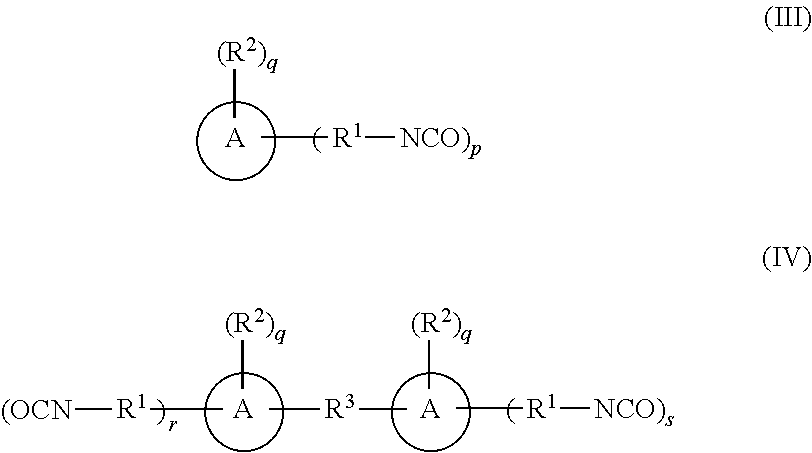Proppant With Polyurea-Type Coating
a technology of polyurea-type coating and proppant, which is applied in the direction of coating, pretreatment surface, and borehole/well accessories, etc., can solve the problems of adversely affecting the performance and usefulness of precured, phenolic coatings, and the continued conductivity of fractured strata, and achieves good bonding strength, good coating weight, and high crush resistance
- Summary
- Abstract
- Description
- Claims
- Application Information
AI Technical Summary
Benefits of technology
Problems solved by technology
Method used
Image
Examples
example 1
[0090]The process for making a polyurea-type coating according to the invention reflects the preparation of the base polyurea using a catalyst in an aqueous solution with specific time and order of addition and a temperature that is chosen to result in a polyurea-type coating that is suitable for use as a high temperature, high pressure proppant coating that is resistant to loss at typical downhole conditions found in high temperature wells. Using the cycle described in this example and shown in Table 1, the coating weight can be increased by simply increasing the amounts of the total chemicals while working with this ratio. Proppants having 2.1%, 3.1%, and 3.7 wt % coatings have been prepared using this method.
TABLE 1StepEvent1)2000 g of 20 / 40 northern white sand is heated to 206° F. (97° C.) and placed in a lab mixer with good, continuous mixing. Mixing continues throughout the coating process.2)The clock is started (T = 0), and 2 g of 3-aminopropyl trietho...
example 2
Polyurea with B Stage Curing
[0093]The approach of Example 2 incorporates a delayed, b-stage cure ability into the polyurea-type coating. This coating, much like that of Example 1, is formed as it is applied by the simultaneous addition and reaction, represented according to the sequence shown below in Table 2.
TABLE 2StepEvent1)2000 g of 20 / 40 northern white sand is heated to 204° F. (97° C.) and placed in a lab mixer with good, continuous mixing. Continuous mixing was performed throughout the coating process.2)The clock is started (T = 0), and 2 g of a silane coupling agent (3-aminopropyl triethoxy silane) is added.3)At T = 10 seconds, the addition of 79.2 g of a polymeric isocyanate (liquid polyMDI) (31.1% NCO) begins and ends at T = 100 seconds.4)Also at T = 10 seconds, 28.8 g of a 12% aqueous solution of a curing agent such as blowing catalyst bis-dimethylaminoethylether, begins and ends at T = 100 seconds.5)At T = 100 seconds, 8 g of 40% aqueous hexamethylenetetramine (a B-stage...
PUM
| Property | Measurement | Unit |
|---|---|---|
| interparticle bond strength | aaaaa | aaaaa |
| glass transition temperature | aaaaa | aaaaa |
| temperature | aaaaa | aaaaa |
Abstract
Description
Claims
Application Information
 Login to View More
Login to View More - R&D
- Intellectual Property
- Life Sciences
- Materials
- Tech Scout
- Unparalleled Data Quality
- Higher Quality Content
- 60% Fewer Hallucinations
Browse by: Latest US Patents, China's latest patents, Technical Efficacy Thesaurus, Application Domain, Technology Topic, Popular Technical Reports.
© 2025 PatSnap. All rights reserved.Legal|Privacy policy|Modern Slavery Act Transparency Statement|Sitemap|About US| Contact US: help@patsnap.com



